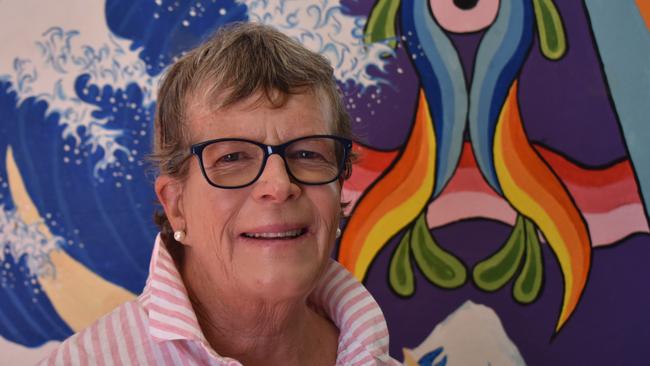Australia’s Best Teachers: Sabina Armstrong turns to Indigenous ways of teaching for mainstream inspiration
Sabina Armstrong noticed 80 per cent of kids don’t fit the traditional mould of teaching. Believing there has to be a better way, the NSW teacher looked to Aboriginal education for inspiration.
Education
Don't miss out on the headlines from Education. Followed categories will be added to My News.
Sabina Armstrong wants to challenge school leaders to think outside the box for new ways to inspire and teach young Australians — and she’s looking at Aboriginal and Torres Strait Islander ways of teaching children for inspiration.
After winning the Premier’s Teachers Mutual Bank Aboriginal Education Scholarship in 2020, the Walcha Central School in NSW teacher embarked on a study tour in the Northern Territory to interview Elders and teachers on their education methods.
Australia’s Best Teachers: Meet some of the great teachers as nominated by you
Teachers deserve the ‘highest training, support and respect’
“I think teaching is the most extraordinary profession, you have the opportunity to change the trajectory of young people’s lives regardless of where they come from or what their aspirations might be,” Ms Armstrong said.
“But I noticed 80 per cent of kids anywhere don’t fit the traditional mould of teaching and I believe there’s got to be something out there better.
“What is it that we can inspire them with that makes them love that learning and gives them the required skills?”

Ms Armstrong wanted to learn from Aboriginal people who “have been teaching their children for more than 65,000 years” and spent six weeks visiting a mix of private and public schools.
From this, she said there were four key findings that could be applied to all Australian classrooms: Thinking Classrooms; Community and cultural engagement; Cultural competence; and Wellbeing.
On her return to Walcha Central School, Ms Armstrong trialled some of her findings with the support of the school.
“The way that the Aboriginal people taught was the way that I believe we should be offering our kids the opportunity, I guess along the lines of if we give you a fish, you can eat for a day, teach you how to fish, you’ll be able to eat for a lifetime,” she said.
“We did a trial and combined classes based on key learning areas. For example, science, maths and music were together. Design, technology and PE were together.
“What those kids learned, created and developed was just a different level. There were 47 kids in the one class and you had two or three teachers in that space.
“In the end, what I noticed is that we needed to teach less and we became facilitators. And the most amazing one that we trialled was actually making hydroponics systems.
“The students each had their role and it was hands on. It was research, it was speeches, it was debates, they created portfolios and built systems and everyone had such a buzz around learning.”

She was nominated for News Corp’s Australia’s Best Teachers series by Teachers Mutual Bank.
The bank’s chief marketing officer Nichole Banks said Sabina was passionate about Aboriginal education and understanding Aboriginal ways of knowing, thinking, learning and teaching.
“As a recipient of the Premier’s Teachers Mutual Bank Aboriginal Education Scholarship, Sabina has challenged traditional teaching methods to empower students and teachers alike to raise the bar on learning. By better understanding Aboriginal ways of teaching, her work is building ways to engage Aboriginal students and help teachers to become more culturally competent,” Ms Banks said.
Ms Armstrong is working on a book about her findings and hopes to inspire others to try different approaches to teaching.





